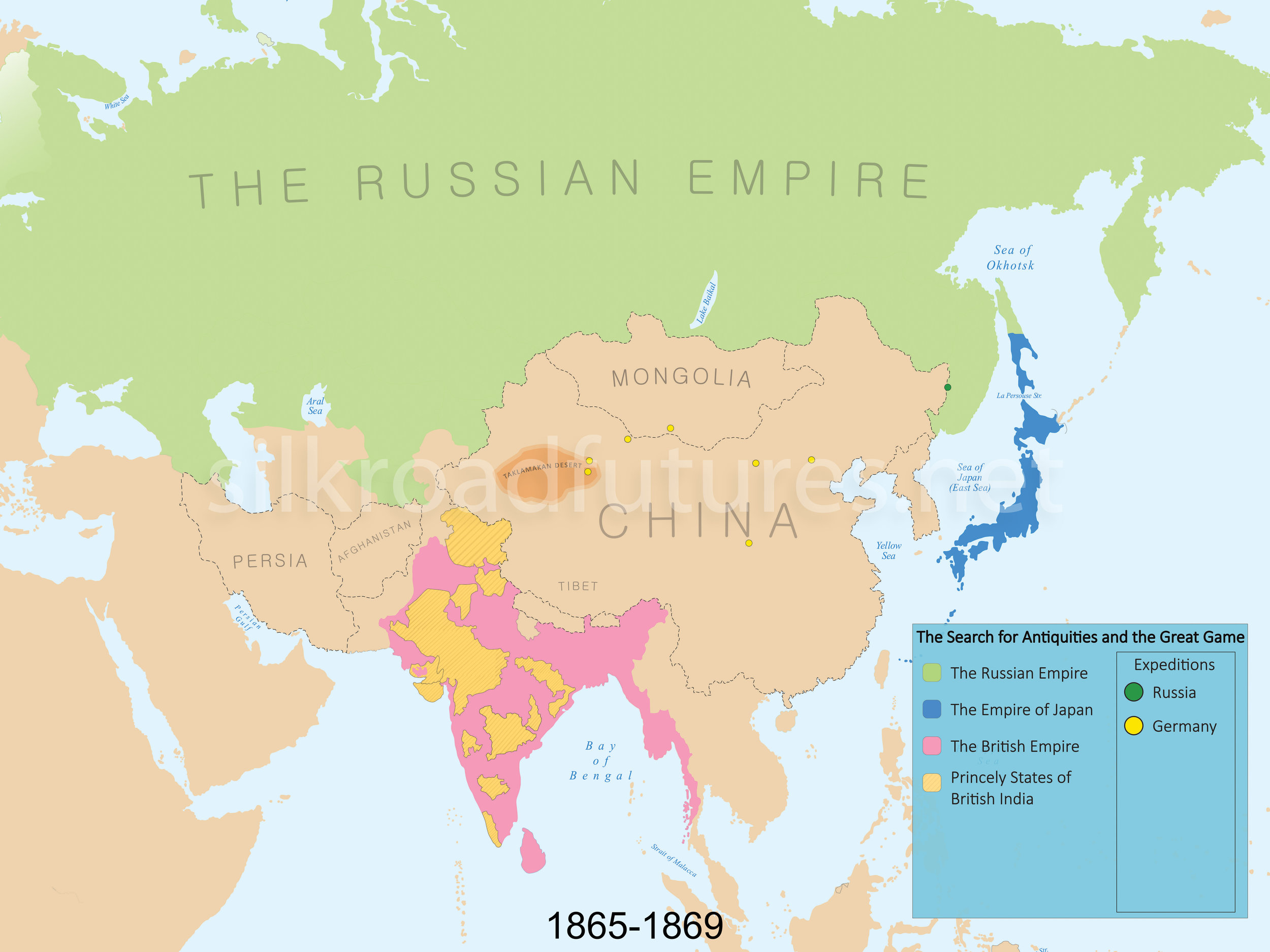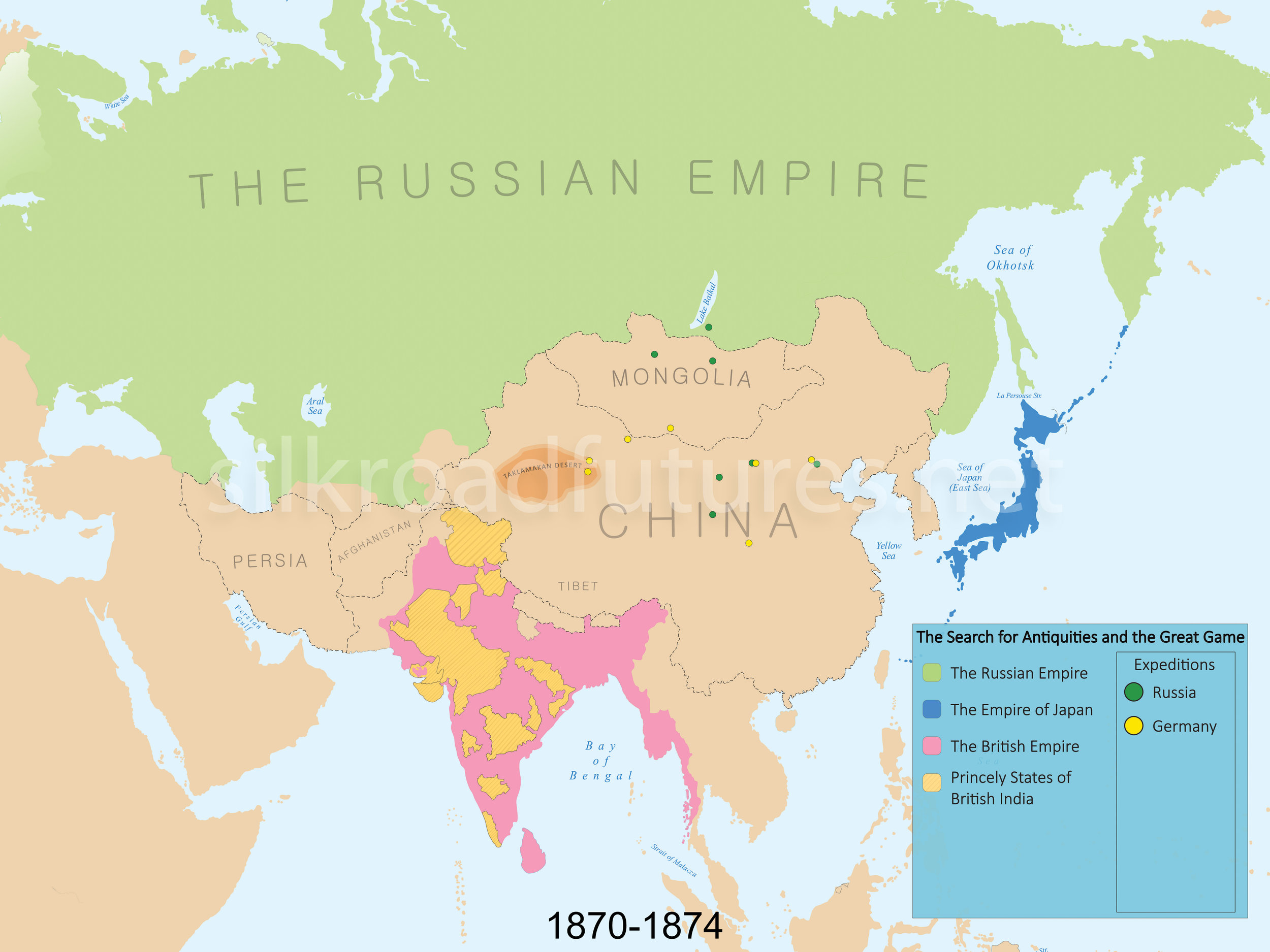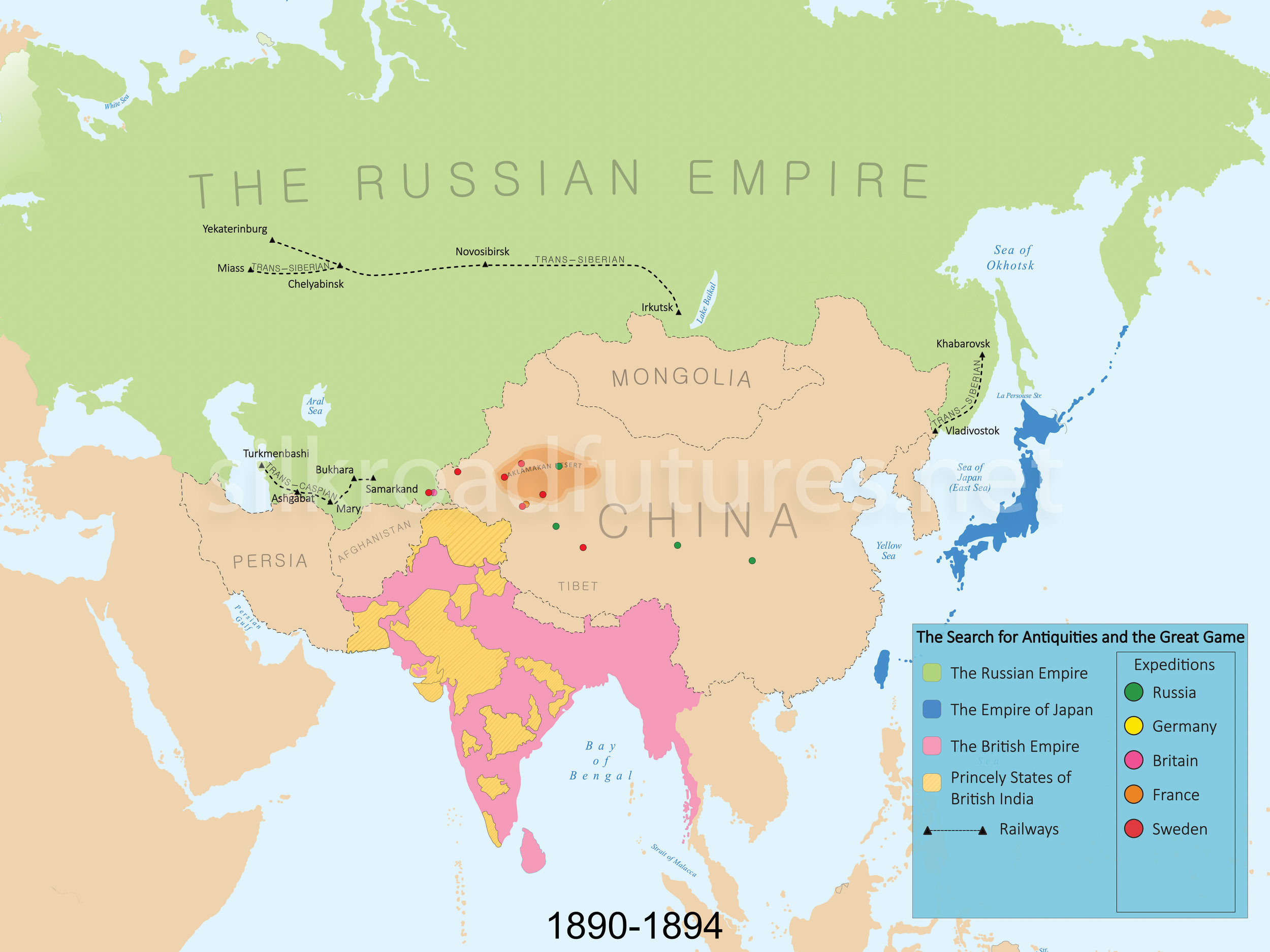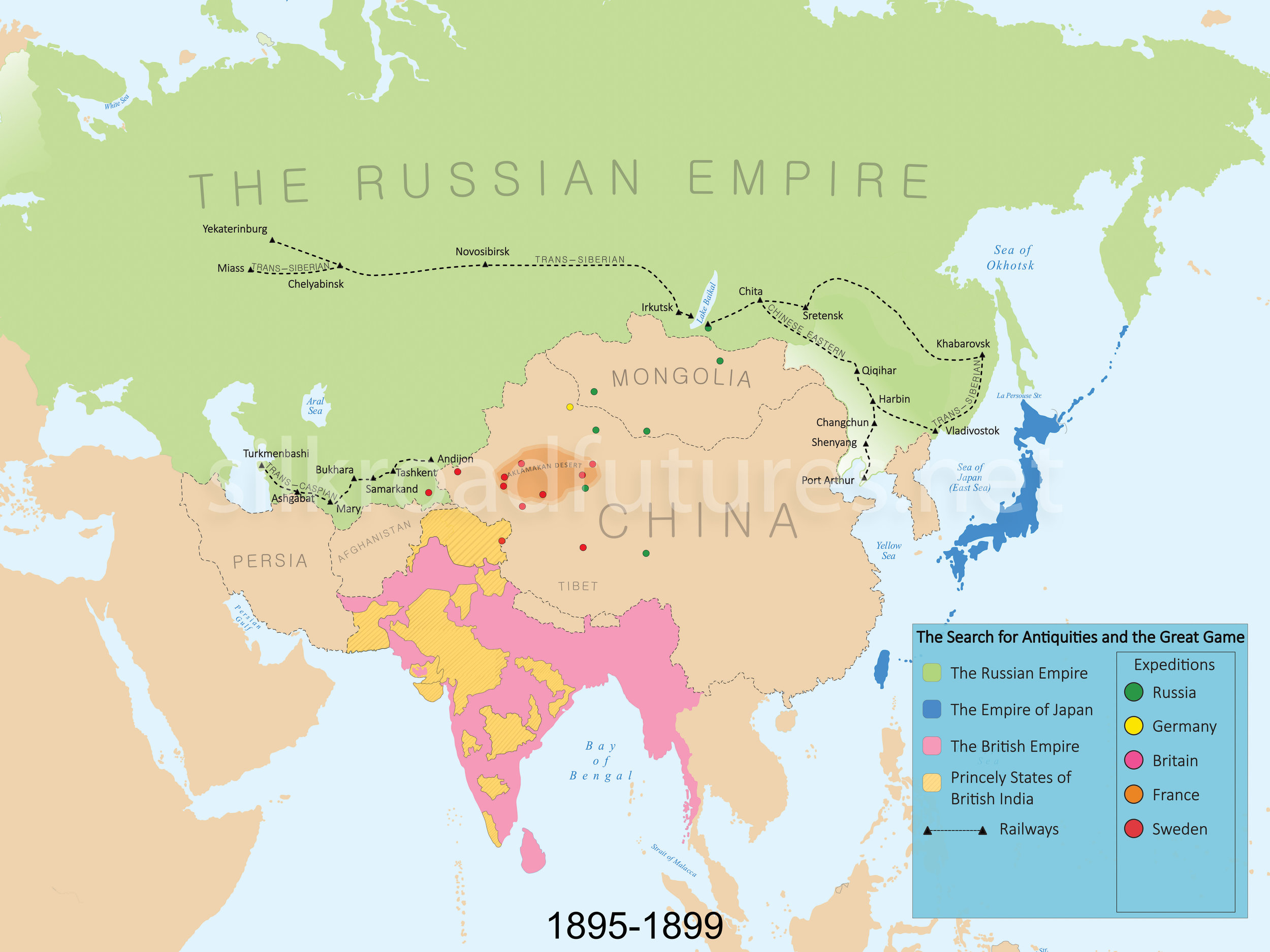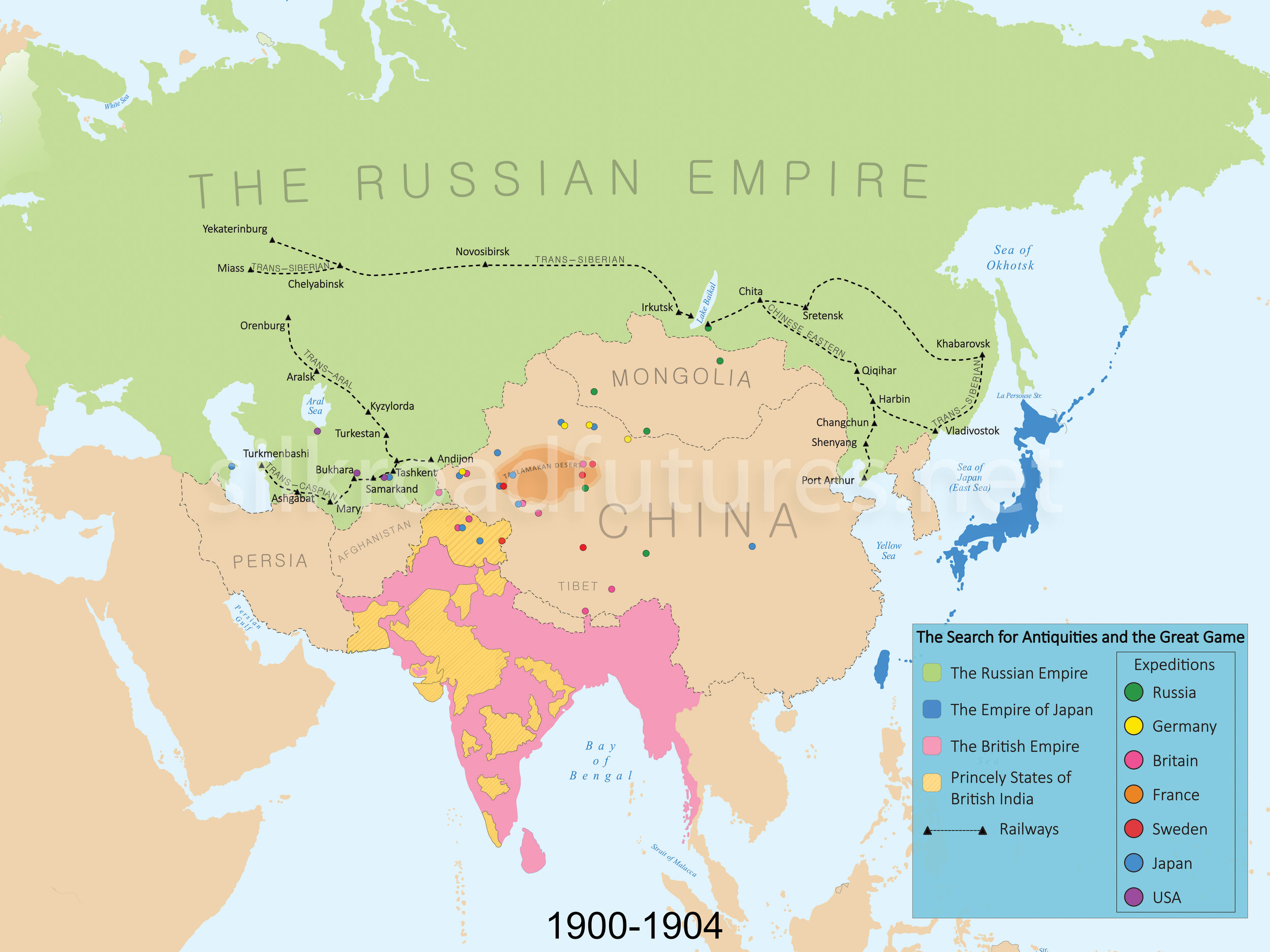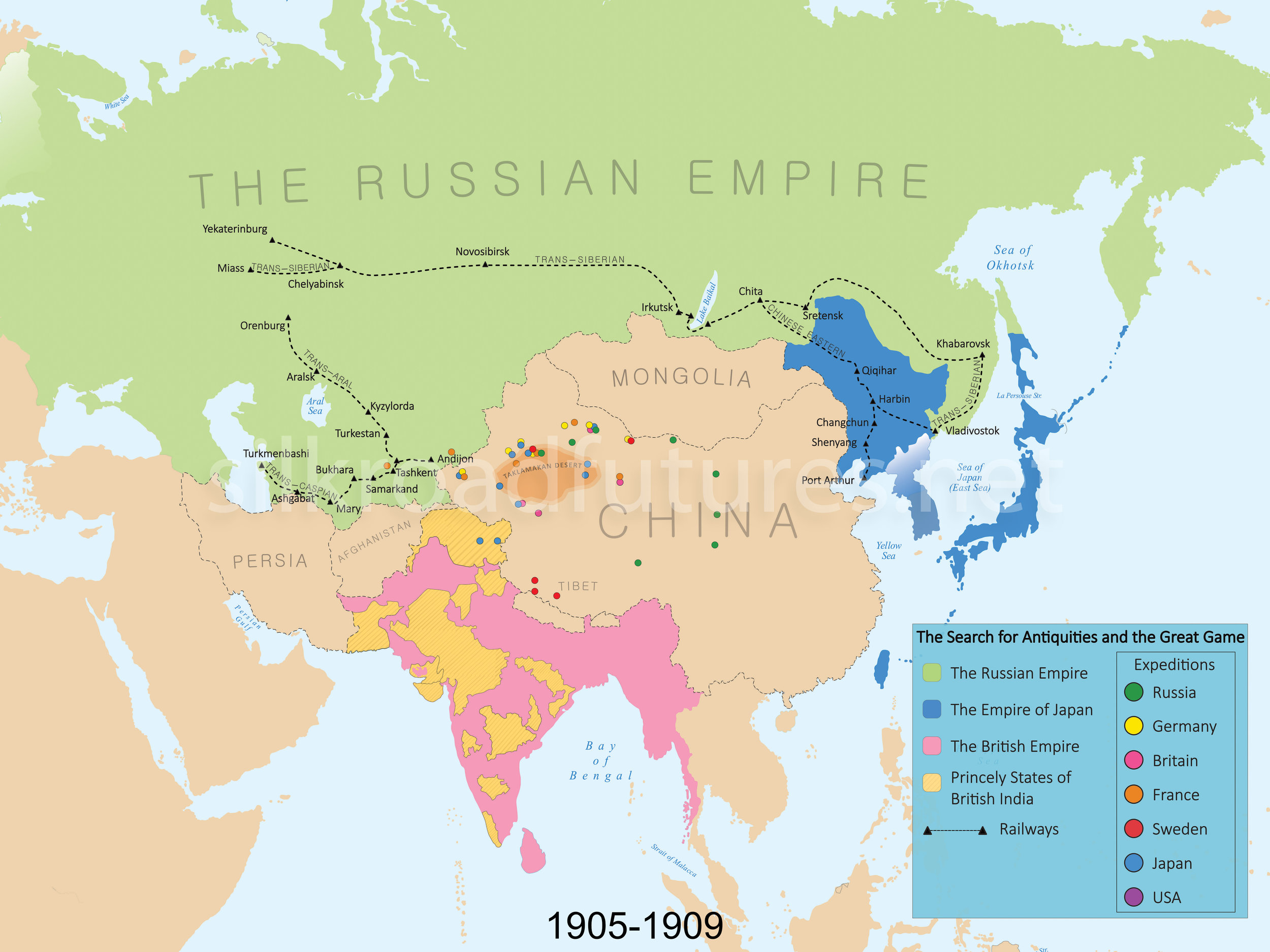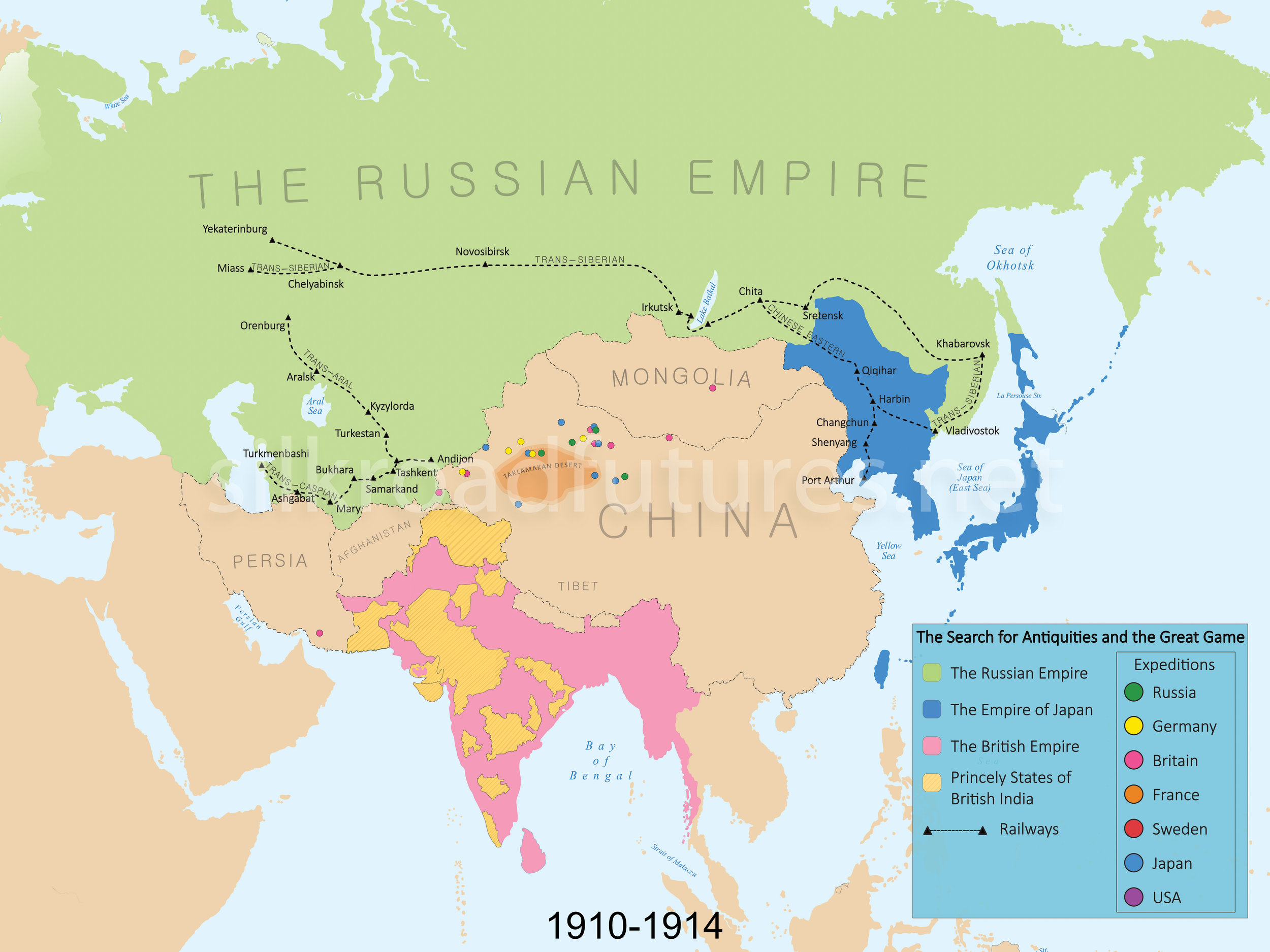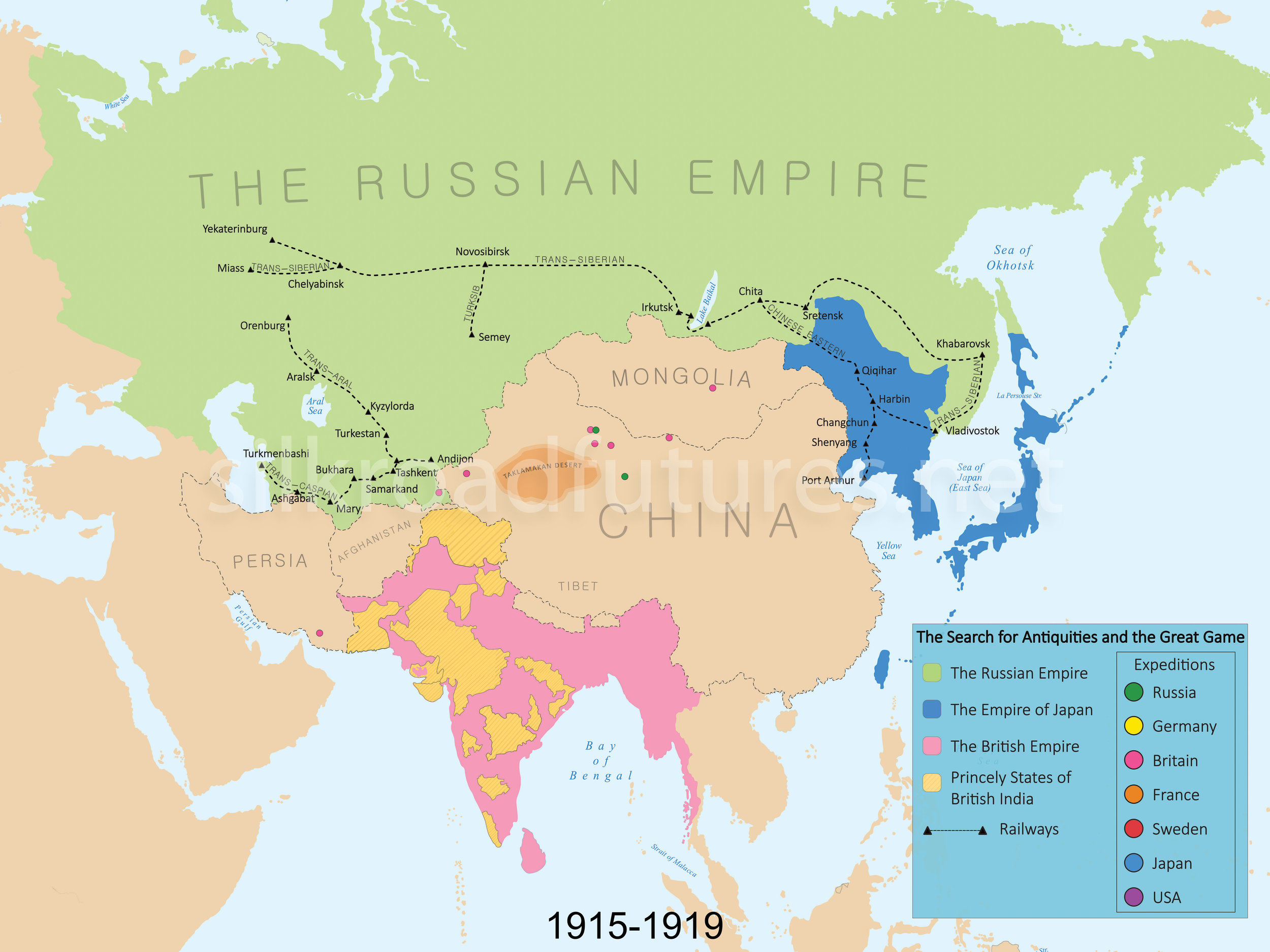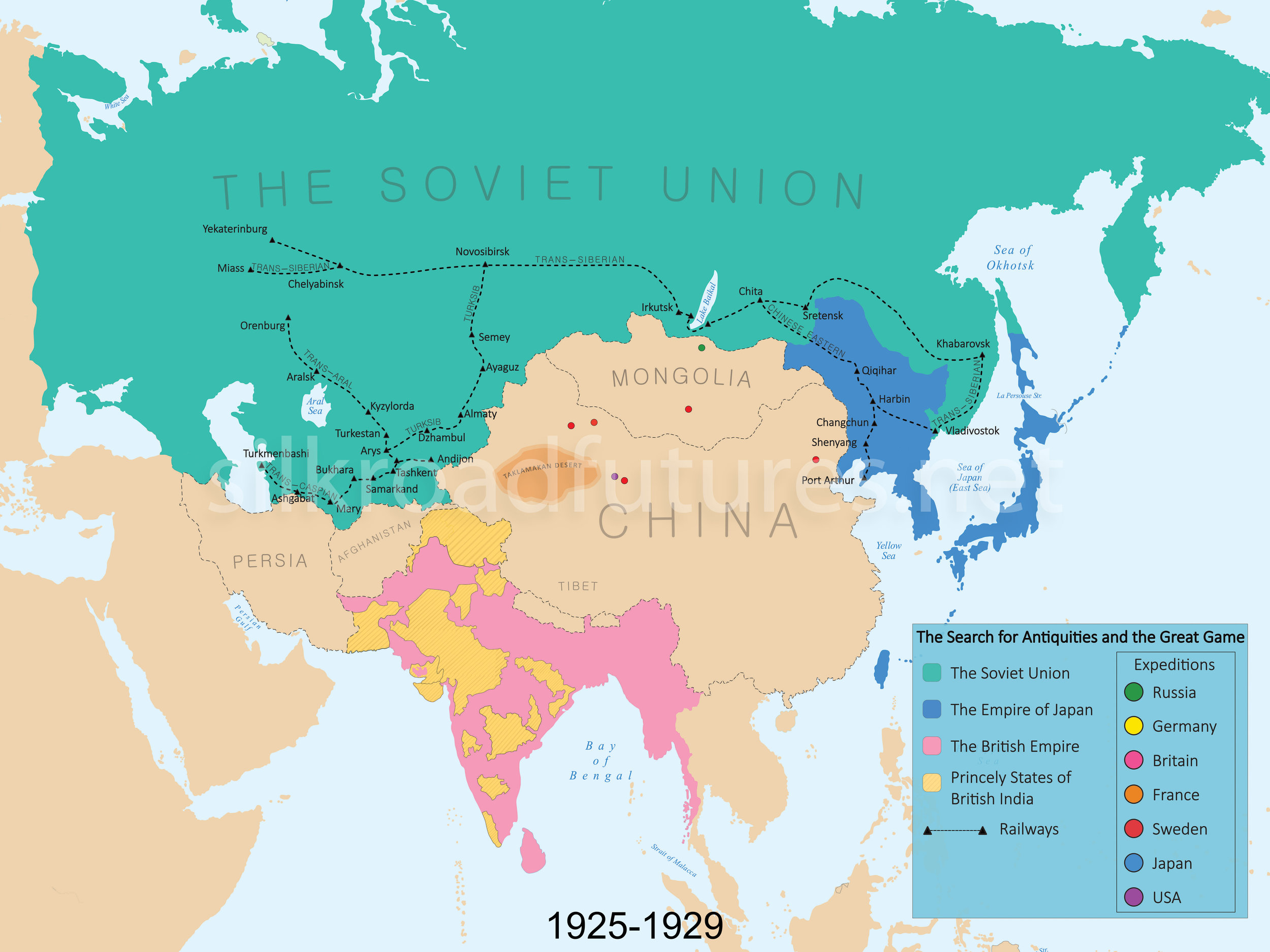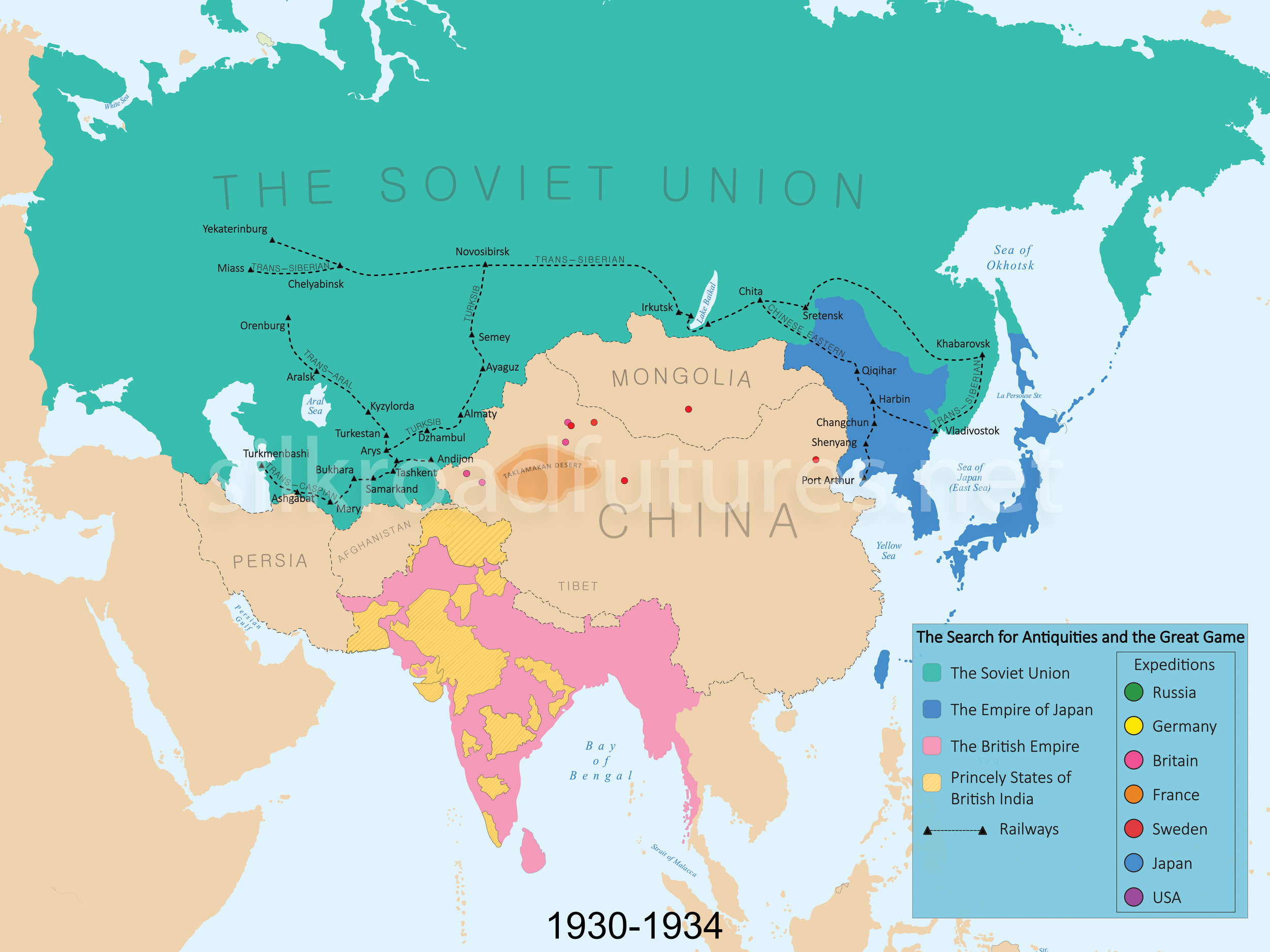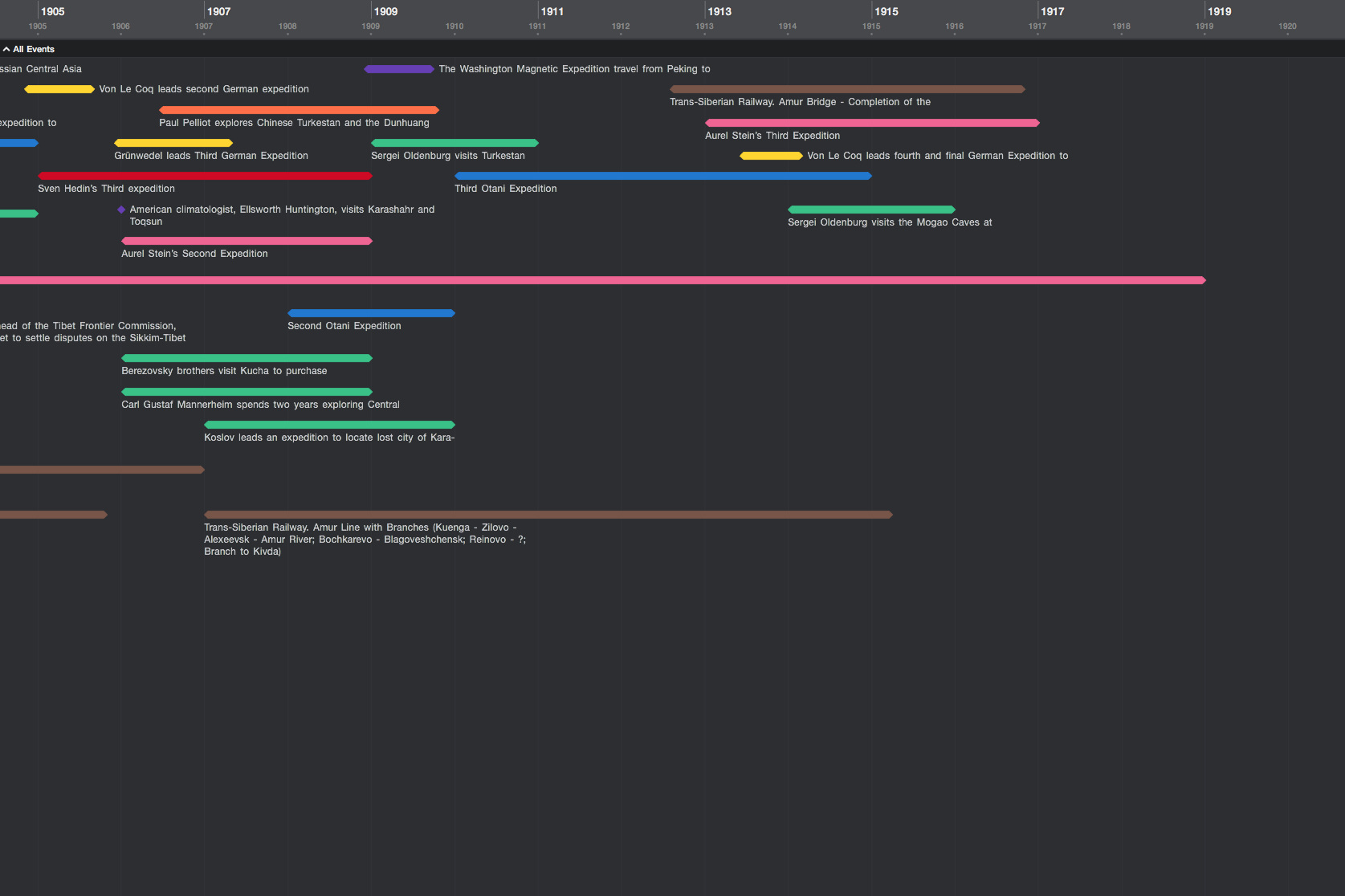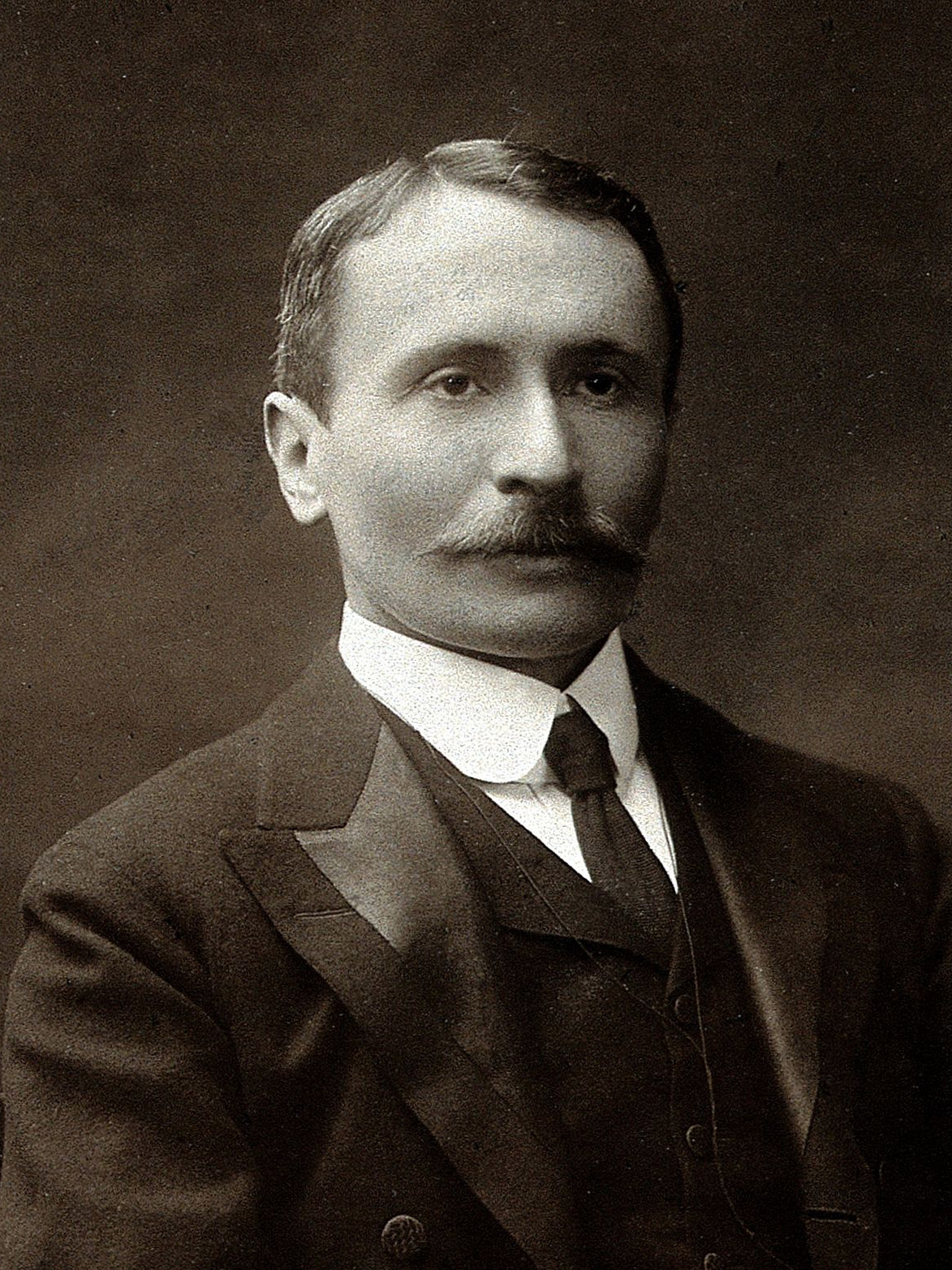A ‘Golden Age’ of Silk Road Research
Digging down to the foundations of the Silk Road as a form of historiography involves returning to the nineteenth century Great Game, and the search for antiquities across the deserts and plains of Central Asia. Ideas about the region’s history and culture, which gathered pace in the decades leading up to World War 1, were quite different to those developed for other parts of Asia. Teams from Europe and Japan searched for evidence that would reveal deep histories of long-distance trade, and the spread of ideas, languages, religions and technologies across Asia, and with Europe.
At the height of the Great Game such items bolstered the collections of museums in Berlin, London, Paris, Stockholm, Leningrad, Calcutta and Tokyo. To secure influence across vast terrains Russia embarked upon a highly ambitious program of infrastructure. This included the Trans-Caspian, Turksib and extraordinarily ambitious Trans-Siberian Railway.
In examining these events I came to realize that narratives and ideas of connectivity and exchange - a history that has come to be known as the Silk Road - require a particular ecology for them to thrive and gain visibility internationally. In the slides below, we see certain intersections - between infrastructure, geopolitical rivalries played out over vast distances, and the crafting of transregional histories - that are reforming today through Belt and Road.


